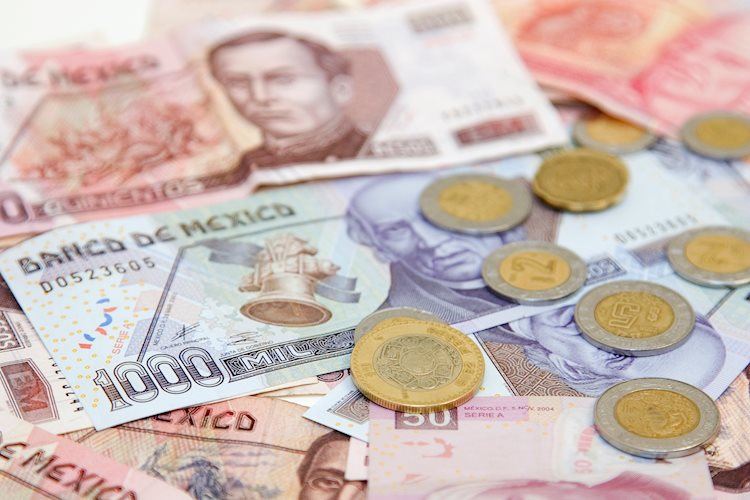Pope Emeritus Benedict XVI died at the age of 95 on Saturday.
Ratzinger was born on April 16, 1927 in the city of Marktl, but spent most of his childhood and adolescence in Traunstein, close to the border with Austria.
From a humble family and the youngest of three brothers, he entered the seminary at the age of 12 and was fluent in several languages, including Greek and Latin. He later received a doctorate in theology at the University of Munich.
He was chosen pope on April 19, 2005, after the death of John Paul II in the same year.
Orthodox, Ratzinger was known to transit between conservatives more easily and one of the favorites for the papal succession, even though it was not officially his will.
The name adopted by him was that of Benedict XVI. In the minutes of the general audience, published on the Vatican’s official website, he explained the reasons for his choice.
“I wanted to call myself Benedict XVI in order to have an ideal relationship with the venerable pontiff Benedict XV. [Cardeal Giacomo della Chiesa]which led the Church through a troubled period due to World War I,” he said.
“He was a courageous and authentic prophet of peace, and he committed himself with indefatigable courage first to avoiding the drama of war and then to limiting the harmful consequences”, he added.

Saint Benedict is also the patron saint of Europe and founder of the Benedictine Order.
Benedict XVI, however, would also become the first pope to resign in 600 years, after the Catholic Church became the target of scandals involving accusations of corruption and pedophilia.
Childhood amid Nazism in Germany
In a period of rise of the Nazi regime in Germany, Ratzinger chose to focus on the church and its teachings in order to protect the movement.
Even with the decision, and with his father also opposing Adolf Hitler’s regime, Ratzinger entered the Army’s auxiliary force in 1941, the same time he joined the preparatory seminar, aged 14.
Already at the end of the Second World War, he was called up to help with anti-aircraft services.
Between the comings and goings of calls for military service, he deserted in 1945 after being captured by US soldiers and imprisoned for months.
Ratzinger then decided to return to seminary, and he was ordained in June 1951.

With the cassock, the new priest continued his studies in theology and an academic career in several European educational institutions, teaching at the universities of Bonn and Muester and occupying the position of vice-rector at the University of Regensburg.
Known for his profound reflections on the theological universe, Benedict XVI has publications, in various formats, that are known worldwide.
The works “Dogma and Revelation” and “Introduction to Christianity”, for example, are university references for those who want to better understand theology.
Trajectory in the Catholic Church
Due to his academic and scientific knowledge, the future pope contributed significantly to the Catholic Church.
In 1977, he was appointed Archbishop of Munich and Freising and his episcopal consecration was made official the following year. He became the first diocesan priest to assume the Bavarian archdiocese.
In the same year he was named cardinal and participated in the conclaves that elected John Paul 1st and John Paul 2nd.
The latter ordained him prefect of the Congregation for the Doctrine of the Faith – the former Court of the Inquisition, which was historically known for persecuting and punishing those who deviated from the conduct imposed by the Church.
In 1982, Ratzinger resigned from the pastoral government of the Archdiocese of Munich.

In 1998, with his nomination as vice-dean of the College of Cardinals, Ratzinger moved even closer to the post of Vatican head of state.
With the name approved by Pope John Paul II, his election as dean was accepted in 2002.
Election
With the death of John Paul II on April 2, 2005, the College of Cardinals articulated to start discussions for the choice of the new pope.
With 1,115 cardinals, the four votes were held, but only at the end of the day on April 19 did the Vatican chimney release white smoke, thus announcing the choice of a new pontiff.
Ratzinger was announced as the new pope and decided to be called Benedict XVI. The name was officially announced on April 24, 2005, at a special mass held in St. Peter’s Square in the Vatican.
Benedict XVI spoke in favor of a leadership that embraced all.
“In your footsteps [de Bento 15]I wish to place my ministry at the service of reconciliation and harmony between men and peoples, profoundly convinced that the great good of peace is above all a gift from God – a fragile and precious gift that must be invoked, protected and built day by day day after day with everyone’s contribution”, he added during the audience.
Even so, his alternatives presented in speech were not enough for the pontiff to be out of controversy.
For defending a conservative Church and making statements against the adoption of children by people of the same sex, he was criticized by the press.

Topics such as abortion, pedophilia and homosexuality were also discussed.
In a document registered on the Vatican website, the former pope even imposed restrictions on priests in seminaries.
“The Church cannot admit to the Seminary and Holy Orders those who practice homosexuality, show deep homosexual tendencies or support the so-called gay culture”, he communicated.
Some statements were given during his first trip to Latin America, visiting Brazil, in May 2007.
He came to the 5th General Conference of the Latin American and Caribbean Episcopate, at the Sanctuary of Aparecida, in São Paulo, for the canonization of Friar Galvão, who became Saint Anthony of Sant’Anna Galvão.
During his tour of the country, he harshly criticized the press for considering that it does not value marriage and “does little” for the virginity of singles.
He also criticized abortion, research with embryos and euthanasia, and even denied that the Church had forcibly baptized the indigenous peoples of the American continent.
In addition, he made an appeal for governments to support women who choose to stay at home to take care of the family.

Benedict XVI has also been the target of criticism regarding cases of pedophilia involving priests around the world.
Accused of omission, the pope emeritus had to dismiss several bishops and promoted a “cleansing” after one of the most emblematic scandals was revealed.
The case involved a Mexican priest who died in 2008. Priest Marcial Maciel sexually abused several seminarians and had children with numerous women.
At the end of his pontificate, scandals increased. In 2012, it was the turn of confidential Church documents to be leaked to the Italian media, highlighting the lack of transparency and covering up cases of money laundering.
Letters from the pontiff himself on sensitive topics, such as sexual scandals and internal intrigues, were also exposed.
The case was baptized by the Italian press as Vatileaks. Butler Paolo Gabriele, who had worked with the pope since 2006, was arrested for being responsible for leaking hitherto secret documents to investigative journalist Gianluigi Nuzzi.

Gabriele was tried at the end of 2012 and sentenced by the Vatican Court to 18 months in prison. Benedict XVI forgave him some time later.
At the time, investigations pointed out that Gabriele did not act alone. He had help from Claudio Sciarpelletti, a computer technician who worked for the Secretariat of State of the central government of the Holy See, in the Vatican, and had access to the information.
Scratchs
Benedict XVI was also the target of aggression attempts during his period of governance. One of them occurred in 2007, when a man overcame the security checkpoint in St. Peter’s Square and tried to get into the vehicle carrying the pope among the faithful.
He was immediately restrained and immobilized.
A woman, Susanna Maiolo, also attacked Benedict XVI twice, in 2007 and 2008.
On the first occasion, she went through security, but was arrested beforehand. At the second opportunity, Maiolo even pulled the Pope, who fell during the Midnight Mass.

He was not injured and continued the celebration moments after the attack.
In the melee, French Cardinal Roger Etchegaray fell and broke his femur, requiring surgery. Maiolo was taken to a hospital and admitted for psychiatric treatment.
The Renunciation of the Papacy
In February 2013, aged 85, Benedict XVI resigned from office. In an announcement made during a meeting with the cardinals, he revealed the real state of his health.
“After having repeatedly examined my conscience before God, I am convinced that my strength, due to advanced age, is no longer adequate for the adequate exercise of the ministry of Peter.”
With the resignation formalized on February 28, 2013, Benedict XVI officially relinquished his responsibilities as the highest representative of the Catholic Church.
He was replaced by Argentine Jorge Mario Bergoglio, titled Francisco, on March 13, 2013.

*posted by CNN’s Tiago Tortella
Source: CNN Brasil
Bruce Belcher is a seasoned author with over 5 years of experience in world news. He writes for online news websites and provides in-depth analysis on the world stock market. Bruce is known for his insightful perspectives and commitment to keeping the public informed.






